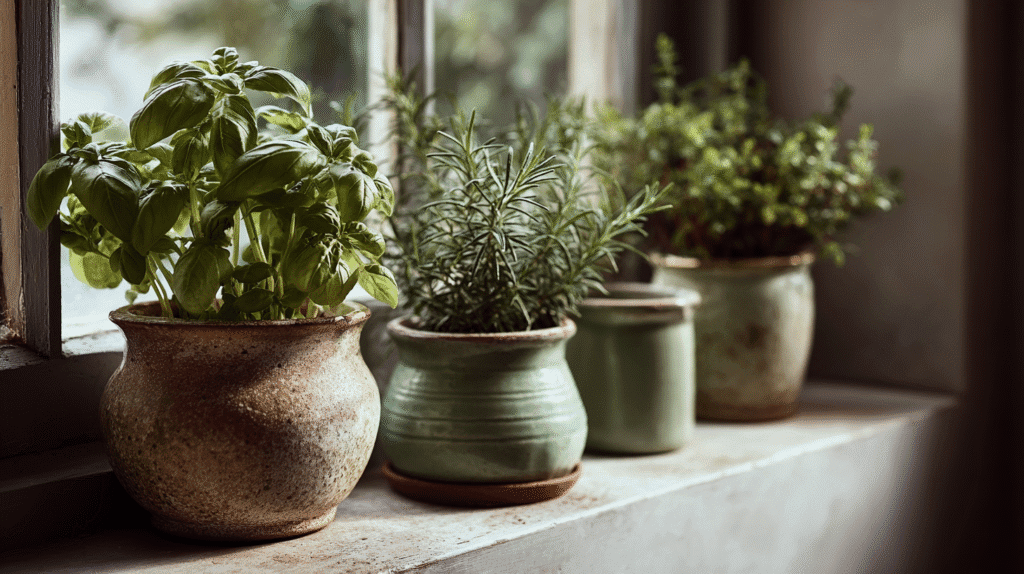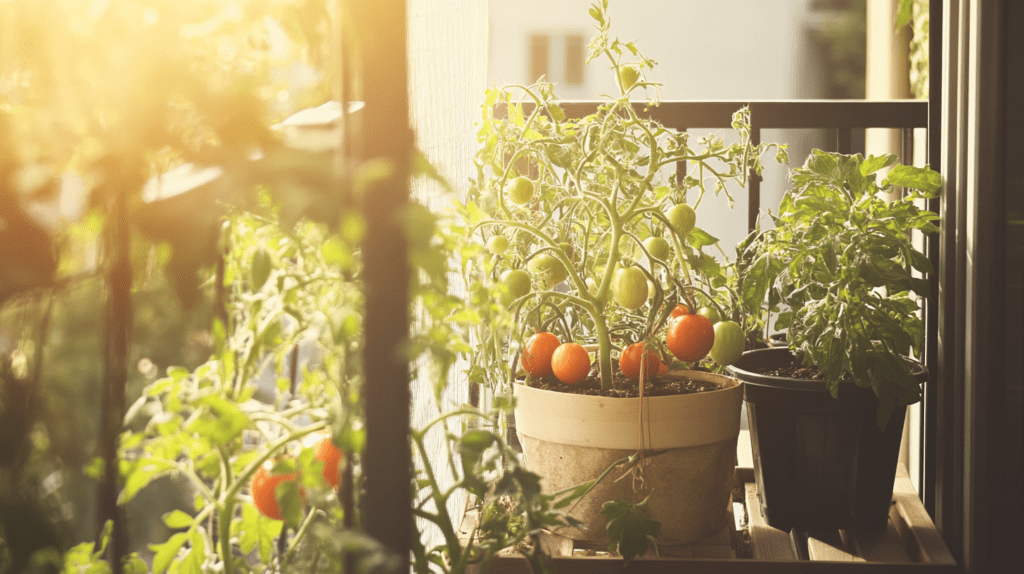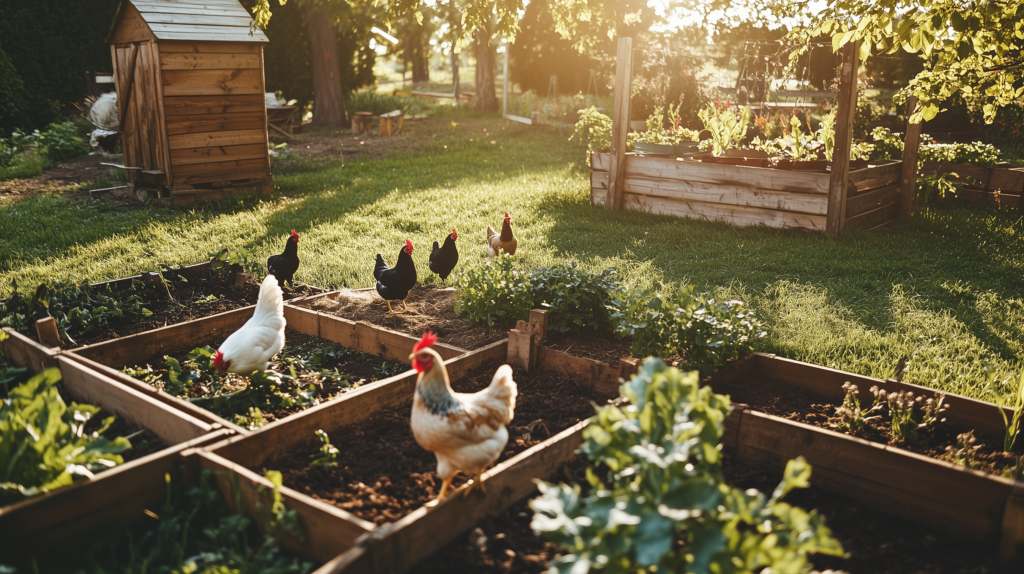This post may contain affiliate links, including those from Amazon Associates. If you make a purchase through these links, I may earn a commission at no additional cost to you. Learn more about our affiliate policy.
Some of my first steps toward self-sufficiency in an apartment didn’t come with a big harvest.
They came with a sprig of mint in my water, the scent of fresh basil on my windowsill, and the quiet joy of snipping thyme for dinner.
If you’ve ever longed to grow your own food but felt overwhelmed by space or experience, this post will guide you through the easiest place to begin: an apartment herb garden.
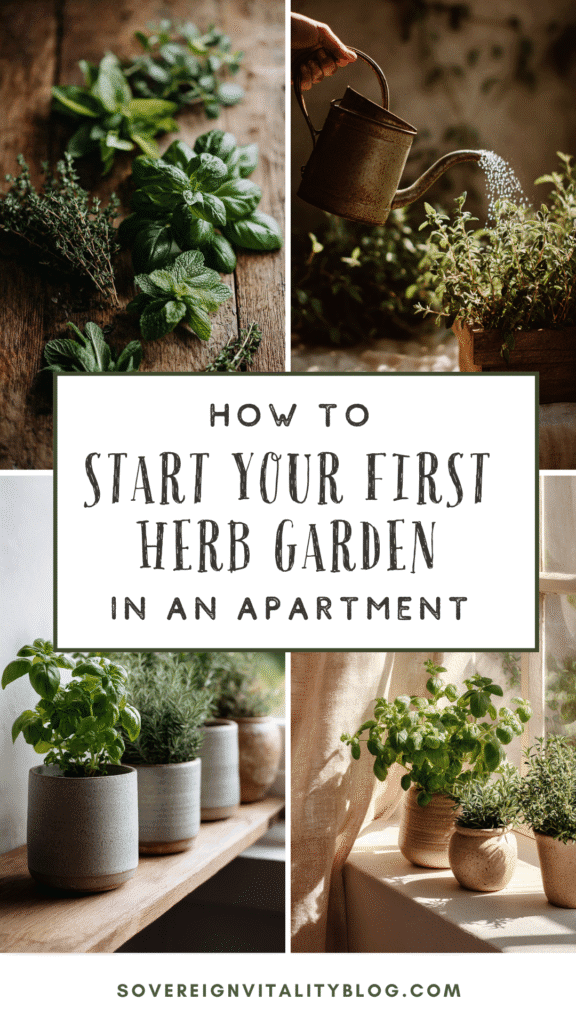
Growing your own herbs, even in the tiniest apartment, connects you back to something deeply nourishing.
You don’t need acres or expert gardening knowledge to get started, just a willingness to begin. A windowsill, balcony, or corner of your kitchen can become a little sanctuary of self-sufficiency.
Choose the Right Herbs for Your Space
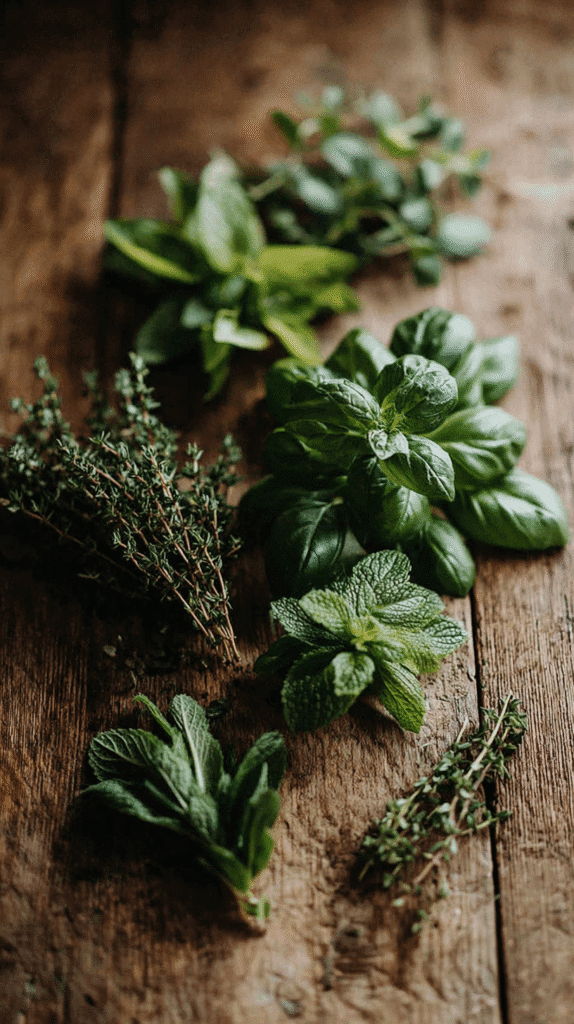
Choosing the right herbs for your apartment herb garden is about understanding your environment and your daily needs.
Herbs are beautifully forgiving, perfect for beginners, and adaptable to small spaces.
Here are some herbs that flourish easily, making them ideal for your apartment garden:
- Basil: Fragrant and versatile, perfect for salads, sauces, and teas. It loves sunny windowsills but will tolerate indirect sunlight.
- Mint: Thrives even in less-than-ideal lighting, and is resilient enough for new gardeners. It’s wonderful in drinks, desserts, and savory dishes alike.
- Rosemary and Thyme: Both prefer plenty of sun but tolerate indoor conditions gracefully. Essential for roasting vegetables and seasoning dishes.
- Parsley: Adaptable and mild, it suits indoor containers beautifully and adds freshness to almost any meal.
- Chives: Hardy and easygoing; they grow quickly and are wonderful fresh or dried.
Some herbs prefer full sun (such as rosemary, thyme, and basil), while others tolerate partial shade (mint, parsley, and chives).
Matching herbs to your apartment’s lighting is the first step toward a thriving indoor garden.
For more herbs and veggies suited for balcony herb gardens, explore my post: 10 Easy Herbs and Vegetables to Grow In Your Balcony Garden.
Gather Containers (No Fancy Supplies Needed)
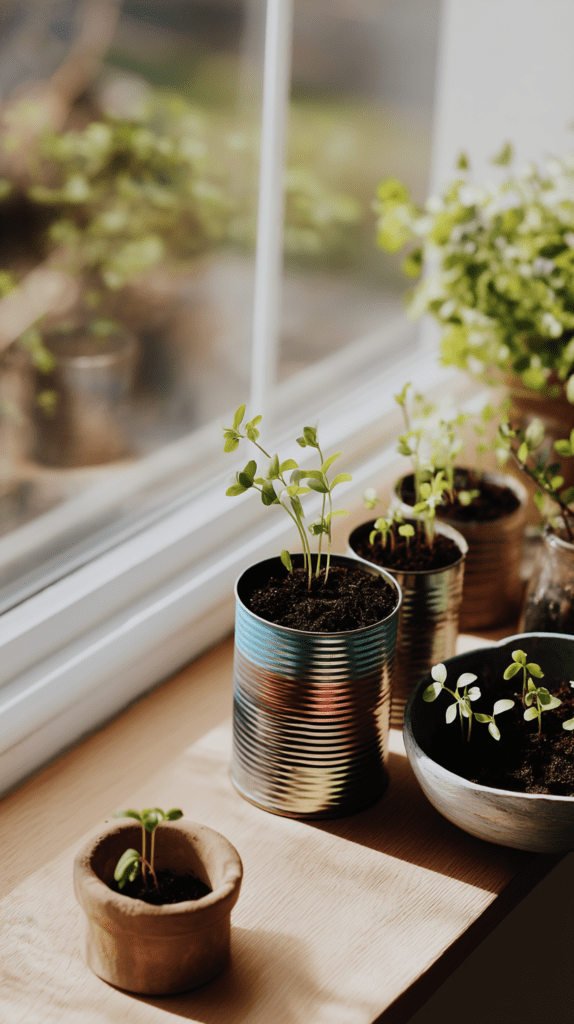
One of the most wonderful things about apartment herb gardening is how simple and inexpensive it can be.
You don’t need costly containers or special gardening tools to get started. Embrace what you already have on hand, turning your kitchen recycling into meaningful resources.
These everyday items can become charming, effective herb containers:
- Glass jars
- Yogurt tubs
- Tin cans
- Ceramic mugs and bowls
- Plastic food containers
To ensure proper drainage (essential to herb health), poke several small holes into the bottom of containers using a screwdriver or nail. If holes aren’t feasible, layer the container bottom with small pebbles to prevent waterlogging.
If you have a balcony, consider railing planters or hanging pots, maximizing your vertical space.
For creative recycled container inspiration, check out my guide: 10 Simple DIY Container Ideas for Apartment Gardening on a Budget.
Set Up a Growing Location
Choosing a location for your herb garden is about balancing your herbs’ needs with your available space.
Herbs generally prefer plenty of natural light, making south-facing windows ideal. But don’t worry, herbs are adaptable and can flourish even in partial sunlight.
Consider these spaces:
- Windowsills: Sunny, convenient, and easy to maintain.
- Balconies: Perfect for balcony garden DIY setups, allowing more herbs and vegetables to grow.
- Fire escapes: If permitted by building regulations, they can become tiny herb sanctuaries.
If your apartment gets uneven sunlight, gently rotate your herb containers every few days to encourage balanced growth.
For creative solutions for limited space, visit my post on 7 Creative DIY Indoor Vertical Herb Garden Wall Ideas.
Use the Right Soil and Drainage
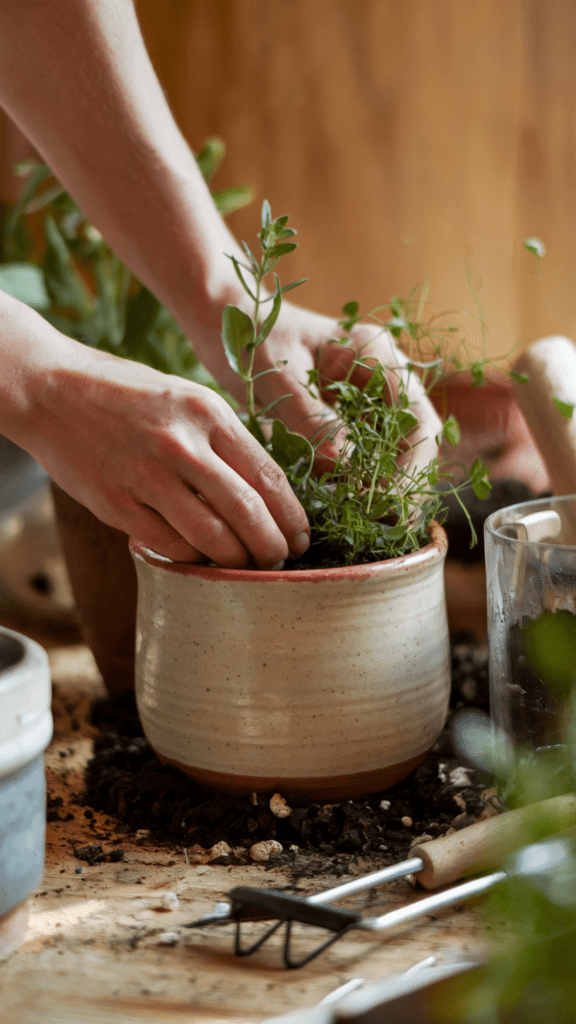
Soil might seem mundane, but it’s truly the lifeline of your herb garden. The right soil ensures herbs have the nutrients and drainage they need to thrive.
Opt for an organic potting mix specifically designed for containers, offering good drainage and aeration.
Simple tips for soil and drainage:
- Fill containers loosely with soil. Avoid packing it tightly.
- Add a layer of pebbles or coarse sand at the bottom to encourage drainage.
- Keep soil gently moist but not soggy. Herbs dislike sitting in wet conditions.
Herbs like thyme, rosemary, and sage especially prefer slightly drier conditions, so always let the top inch of soil dry between waterings.
Water and Feed Wisely
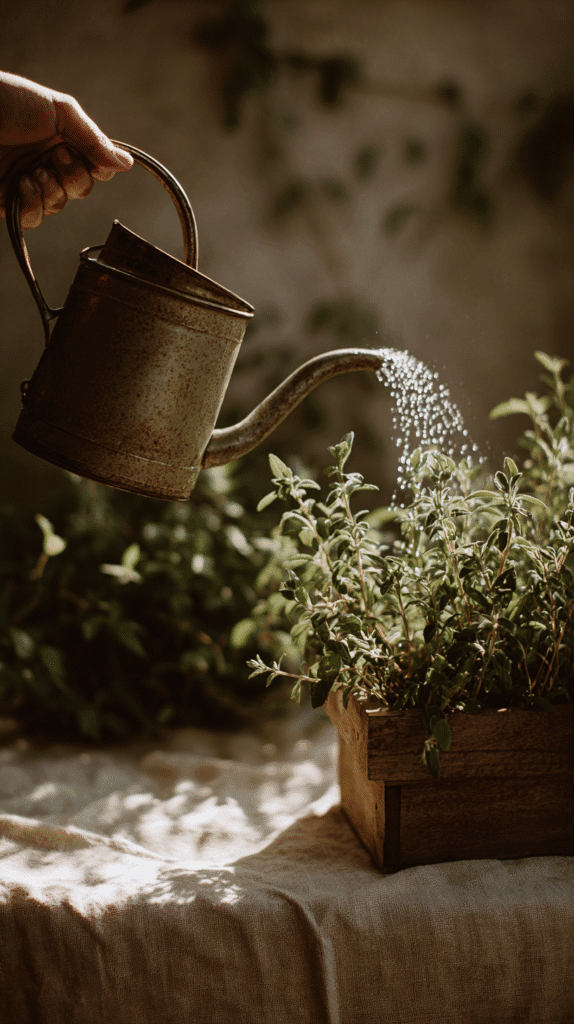
New gardeners often worry about watering frequency. Herbs are intuitive and resilient, and watering them can quickly become second nature.
Use the simple “finger test”:
- Insert your finger into the soil about an inch deep.
- If it feels dry, it’s time to water. If damp, wait another day or two.
Water deeply but infrequently to encourage strong root growth.
Occasional feeding with diluted compost tea or organic fertilizer provides gentle nourishment, keeping your herbs vibrant. For more tips, read 10 Common Container Gardening Mistakes and How to Avoid Them.
Learn When and How to Harvest
Harvesting is one of the most rewarding parts of herb gardening. Regular harvesting encourages herbs to grow more abundantly, becoming fuller and bushier.
Here’s how to harvest mindfully:
- Harvest early and often by gently pinching or snipping leaves from the tops of stems.
- Never strip a whole stem completely. Always leave some foliage to support new growth.
- Use harvested herbs fresh, or dry them to preserve flavors for later.
Incorporating fresh herbs into your meals brings immense joy and satisfaction by adding depth, flavor, and the pride of growing your own food, even in a small space.
Troubleshoot Common Apartment Herb Issues
Every gardener, no matter how experienced, faces occasional challenges. Herbs are generally hardy, but it’s useful to know some simple troubleshooting tips:
- Yellow leaves: Usually caused by overwatering or poor drainage. Ensure pots have proper drainage and let soil dry slightly between waterings.
- Leggy, thin stems: Herbs are likely craving more sunlight. Move pots closer to natural light or rotate them regularly.
- Moldy soil: Often a result of poor air circulation or overly moist conditions. Let your herbs breathe and water less frequently.
Each of these small adjustments will teach you valuable gardening skills, making your apartment garden healthier and more abundant.
Closing Encouragement
You don’t need a full garden to grow food. With a handful of sunlight and a bit of care, even the smallest apartment can offer you fresh, fragrant, living nourishment.
Starting your first apartment herb garden can feel like reclaiming agency and simplicity in your everyday life.
Whether you begin with a pot of parsley, a fragrant basil plant, or a robust mint bush, each small act of gardening quietly builds confidence and capability.

